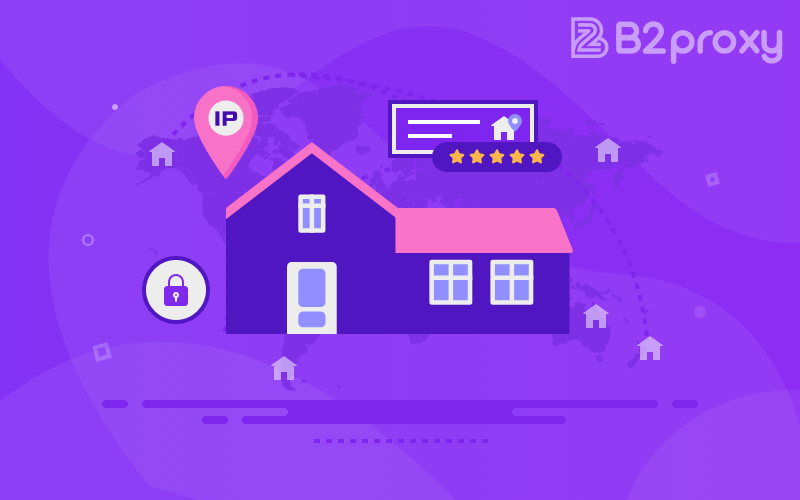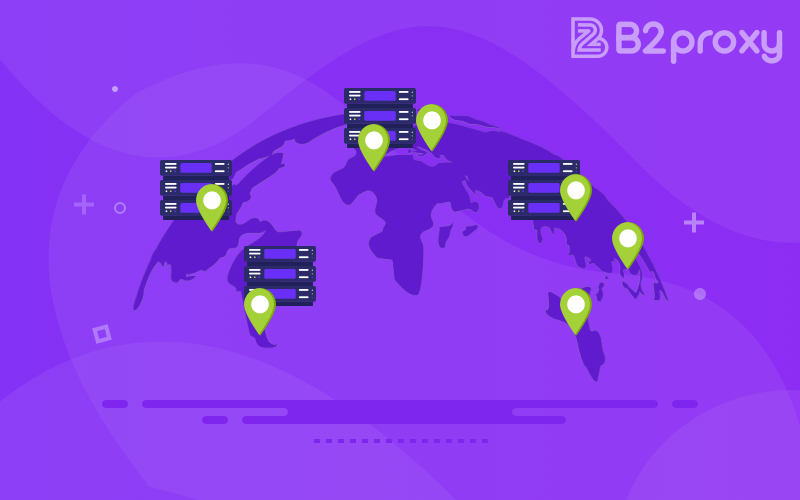
What’s the Difference Between IPv4 and IPv6? A Comprehensive Analysis from Address Structure to Practical Application
What’s the Difference Between IPv4 and IPv6? A Comprehensive Analysis from Address Structure to Practical Application
 July 28.2025
July 28.2025

<p style="margin: 4px 0px; font-family: 等线; font-size: 16px; line-height: 2em;"><span style="font-size: 15px;letter-spacing: 0;vertical-align: baseline">As the number of internet-connected devices worldwide surpasses tens of billions, the traditional IPv4 protocol can no longer meet the demands of rapid network expansion. IPv6, as the next-generation internet protocol, not only provides a massive address space but also optimizes network configuration and security performance. For developers, enterprise network architects, and industries that rely heavily on IP resources (such as proxy services, e-commerce risk control, and data collection), understanding the fundamental differences between IPv4 and IPv6 is a key step in choosing the right proxy IP and deploying network architecture.</span></p><h3 class="paragraph text-align-type-left tco-title-heading 3" style="line-height: 2em;"><span style="font-size: 19px;letter-spacing: 0;vertical-align: baseline">What is IPv4? Why Does It Still Dominate the Internet?</span></h3><p style="margin: 4px 0px; font-family: 等线; font-size: 16px; line-height: 2em;"><span style="font-size: 15px;letter-spacing: 0;vertical-align: baseline">IPv4 (Internet Protocol Version 4) is currently the most commonly used internet address protocol. It uses a 32-bit address structure, with each address consisting of four bytes, allowing for about 4.2 billion usable IPs. These addresses are expressed in dotted decimal notation, such as: 192.168.1.1.</span></p><p style="margin: 4px 0px; font-family: 等线; font-size: 16px; line-height: 2em;"><span style="font-size: 15px;letter-spacing: 0;vertical-align: baseline">Although IPv4 was introduced more than 40 years ago, it is still widely used across most commercial networks, web servers, and devices due to its stability and broad compatibility. Most proxy IP products today are also based on IPv4, especially when it comes to accessing social media, search engines, and major e-commerce platforms. IPv4 proxies remain the mainstream choice.</span></p><h3 class="paragraph text-align-type-left tco-title-heading 3" style="line-height: 2em;"><span style="font-size: 19px;letter-spacing: 0;vertical-align: baseline">What is IPv6? Is It the Future of the Internet?</span></h3><p style="margin: 4px 0px; font-family: 等线; font-size: 16px; line-height: 2em;"><span style="font-size: 15px;letter-spacing: 0;vertical-align: baseline">IPv6 was developed to solve the problem of IPv4 address exhaustion. It uses a 128-bit address structure, providing an astonishing 2^128 addresses—around 3.4 x 10^38—enough to assign a unique IP address to every smart device on the planet.</span></p><p style="margin: 4px 0px; font-family: 等线; font-size: 16px; line-height: 2em;"><span style="font-size: 15px;letter-spacing: 0;vertical-align: baseline">An example of an IPv6 address is: 2001:0db8:85a3:0000:0000:8a2e:0370:7334. Though it looks complex, it supports compression and simplified management. Additionally, IPv6 enables Stateless Address Auto Configuration (SLAAC), significantly simplifying the process of connecting devices to the internet.</span></p><h3 class="paragraph text-align-type-left tco-title-heading 3" style="line-height: 2em;"><span style="font-size: 19px;letter-spacing: 0;vertical-align: baseline">IPv4 vs IPv6: Key Technical Differences Explained</span></h3><p style="margin: 4px 0px; font-family: 等线; font-size: 16px; line-height: 2em;"><span style="font-size: 15px;letter-spacing: 0;vertical-align: baseline">Here are the main technical differences between the two protocols:</span></p><p style="margin: 4px 0px; font-size: 16px; font-family: 等线; line-height: 2em;"><span style="font-family: Wingdings">●<span style="font-family: 'Times New Roman'"> </span></span><span style="font-size: 15px;font-weight: bold;letter-spacing: 0;vertical-align: baseline">Address Space</span><span style="font-size: 15px;letter-spacing: 0;vertical-align: baseline">: IPv4 has about 4.2 billion addresses; IPv6 has virtually unlimited space.</span></p><p style="margin: 4px 0px; font-size: 16px; font-family: 等线; line-height: 2em;"><span style="font-family: Wingdings">●<span style="font-family: 'Times New Roman'"> </span></span><span style="font-size: 15px;font-weight: bold;letter-spacing: 0;vertical-align: baseline">Notation</span><span style="font-size: 15px;letter-spacing: 0;vertical-align: baseline">: IPv4 uses dotted decimal format; IPv6 uses hexadecimal with colons.</span></p><p style="margin: 4px 0px; font-size: 16px; font-family: 等线; line-height: 2em;"><span style="font-family: Wingdings">●<span style="font-family: 'Times New Roman'"> </span></span><span style="font-size: 15px;font-weight: bold;letter-spacing: 0;vertical-align: baseline">Configuration</span><span style="font-size: 15px;letter-spacing: 0;vertical-align: baseline">: IPv4 relies on DHCP; IPv6 supports automatic address configuration.</span></p><p style="margin: 4px 0px; font-size: 16px; font-family: 等线; line-height: 2em;"><span style="font-family: Wingdings">●<span style="font-family: 'Times New Roman'"> </span></span><span style="font-size: 15px;font-weight: bold;letter-spacing: 0;vertical-align: baseline">Communication</span><span style="font-size: 15px;letter-spacing: 0;vertical-align: baseline">: IPv4 often requires NAT, making end-to-end communication complex; IPv6 natively supports direct end-to-end connections.</span></p><p style="margin: 4px 0px; font-size: 16px; font-family: 等线; line-height: 2em;"><span style="font-family: Wingdings">●<span style="font-family: 'Times New Roman'"> </span></span><span style="font-size: 15px;font-weight: bold;letter-spacing: 0;vertical-align: baseline">Security</span><span style="font-size: 15px;letter-spacing: 0;vertical-align: baseline">: IPv6 has built-in IPSec, making it more suitable for modern security needs.</span></p><p style="margin: 4px 0px; font-size: 16px; font-family: 等线; line-height: 2em;"><span style="font-family: Wingdings">●<span style="font-family: 'Times New Roman'"> </span></span><span style="font-size: 15px;font-weight: bold;letter-spacing: 0;vertical-align: baseline">Network Performance</span><span style="font-size: 15px;letter-spacing: 0;vertical-align: baseline">: IPv6’s simplified header structure improves packet forwarding efficiency.</span></p><h3 class="paragraph text-align-type-left tco-title-heading 3" style="line-height: 2em;"><span style="font-size: 19px;letter-spacing: 0;vertical-align: baseline">Has IPv6 Fully Replaced IPv4?</span></h3><p style="margin: 4px 0px; font-family: 等线; font-size: 16px; line-height: 2em;"><span style="font-size: 15px;letter-spacing: 0;vertical-align: baseline">The answer is no. Although IPv6 offers stronger technical advantages, the global internet is still in a transition phase where both IPv4 and IPv6 coexist. Many major websites (like Amazon, Facebook) have enabled IPv6 access, but a large number of services still do not support it. Therefore, when deploying proxy IPs or developing cross-border access functions, it is essential to confirm the target site's supported IP protocols.</span></p><h3 class="paragraph text-align-type-left tco-title-heading 3" style="line-height: 2em;"><span style="font-size: 19px;letter-spacing: 0;vertical-align: baseline">Application Differences Between IPv4 and IPv6 in Proxy IP Services</span></h3><p style="margin: 4px 0px; font-family: 等线; font-size: 16px; line-height: 2em;"><span style="font-size: 15px;letter-spacing: 0;vertical-align: baseline">For users needing proxy IP services, IPv4 and IPv6 differ in resource availability, functionality, and use cases:</span></p><p style="margin: 4px 0px; font-size: 16px; font-family: 等线; line-height: 2em;"><span style="font-family: Wingdings">●<span style="font-family: 'Times New Roman'"> </span></span><span style="font-size: 15px;font-weight: bold;letter-spacing: 0;vertical-align: baseline">IPv4 Proxies</span><span style="font-size: 15px;letter-spacing: 0;vertical-align: baseline">: Highly compatible, suitable for most website access, account registration, SEO automation, social media control, etc.</span></p><p style="margin: 4px 0px; font-size: 16px; font-family: 等线; line-height: 2em;"><span style="font-family: Wingdings">●<span style="font-family: 'Times New Roman'"> </span></span><span style="font-size: 15px;font-weight: bold;letter-spacing: 0;vertical-align: baseline">IPv6 Proxies</span><span style="font-size: 15px;letter-spacing: 0;vertical-align: baseline">: Ideal for accessing IPv6-supported websites or conducting large-scale data scraping (such as search engine result analysis and content monitoring); cost-effective and resource-rich.</span></p><p style="margin: 4px 0px; font-size: 16px; font-family: 等线; line-height: 2em;"><span style="font-family: Wingdings">●<span style="font-family: 'Times New Roman'"> </span></span><span style="font-size: 15px;font-weight: bold;letter-spacing: 0;vertical-align: baseline">Hybrid Strategy</span><span style="font-size: 15px;letter-spacing: 0;vertical-align: baseline">: Choosing between IPv4 and IPv6 based on specific business needs can reduce ban risks and enhance concurrency capabilities.</span></p><h3 class="paragraph text-align-type-left tco-title-heading 3" style="line-height: 2em;"><span style="font-size: 19px;letter-spacing: 0;vertical-align: baseline">How to Determine Whether You Should Use IPv6 Proxies?</span></h3><p style="margin: 4px 0px; font-size: 16px; font-family: 等线; line-height: 2em;">1. <span style="font-size: 15px;font-weight: bold;letter-spacing: 0;vertical-align: baseline">Does the target website support IPv6?</span><span style="font-size: 15px;letter-spacing: 0;vertical-align: baseline"> You can verify this using online tools (like ipv6-test.com) or browser developer tools.</span></p><p style="margin: 4px 0px; font-size: 16px; font-family: 等线; line-height: 2em;">2. <span style="font-size: 15px;font-weight: bold;letter-spacing: 0;vertical-align: baseline">Is the IPv4 address range blocked?</span><span style="font-size: 15px;letter-spacing: 0;vertical-align: baseline"> If IPv4 ranges are restricted by the target site, try IPv6 first.</span></p><p style="margin: 4px 0px; font-size: 16px; font-family: 等线; line-height: 2em;">3. <span style="font-size: 15px;font-weight: bold;letter-spacing: 0;vertical-align: baseline">Do you need a large number of unique IPs?</span><span style="font-size: 15px;letter-spacing: 0;vertical-align: baseline"> IPv6 offers more IP resources, ideal for large-scale deployments.</span></p><h3 class="paragraph text-align-type-left tco-title-heading 3" style="line-height: 2em;"><span style="font-size: 19px;letter-spacing: 0;vertical-align: baseline">Conclusion: IPv6 Is the Future, but IPv4 Remains Irreplaceable for Now</span></h3><p style="margin: 4px 0px; font-family: 等线; font-size: 16px; line-height: 2em;"><span style="font-size: 15px;letter-spacing: 0;vertical-align: baseline">While IPv6 represents the future of internet development, its global rollout will take time. Due to its mature ecosystem and widespread compatibility, IPv4 will coexist with IPv6 for the foreseeable future. Enterprises and developers should choose IPv4 or IPv6 proxy strategies flexibly based on target markets, protocol support, and business characteristics, achieving a balance between compatibility and forward-looking planning.</span></p><p style="margin: 4px 0px; font-family: 等线; font-size: 16px; line-height: 2em;"><a href="https://www.b2proxy.com/" target="_self"><span style="font-size: 15px;font-weight: bold;letter-spacing: 0;vertical-align: baseline">B2Proxy</span></a><span style="font-size: 15px;letter-spacing: 0;vertical-align: baseline"> will continue to optimize its global IP resource pool, helping users adapt efficiently to the evolution of internet protocols.</span></p><p style="margin: 4px 0px; font-family: 等线; font-size: 16px; line-height: 2em;"><span style="font-size: 15px;font-weight: bold;letter-spacing: 0;vertical-align: baseline">Q1: Can IPv4 and IPv6 be used simultaneously?</span></p><p style="margin: 4px 0px; font-family: 等线; font-size: 16px; line-height: 2em;"><span style="font-size: 15px;font-weight: bold;letter-spacing: 0;vertical-align: baseline">A1:</span><span style="font-size: 15px;letter-spacing: 0;vertical-align: baseline"> Yes. Many devices and websites support Dual Stack configurations, enabling both IPv4 and IPv6 to improve compatibility.</span></p><p style="margin: 4px 0px; font-family: 等线; font-size: 16px; line-height: 2em;"><span style="font-size: 15px;font-weight: bold;letter-spacing: 0;vertical-align: baseline">Q2: Is IPv6 more secure?</span></p><p style="margin: 4px 0px; font-family: 等线; font-size: 16px; line-height: 2em;"><span style="font-size: 15px;font-weight: bold;letter-spacing: 0;vertical-align: baseline">A2:</span><span style="font-size: 15px;letter-spacing: 0;vertical-align: baseline"> IPv6 natively supports the IPSec protocol and is theoretically more secure. However, actual security also depends on configuration and usage scenarios.</span></p><p style="margin: 4px 0px; font-family: 等线; font-size: 16px; line-height: 2em;"><span style="font-size: 15px;font-weight: bold;letter-spacing: 0;vertical-align: baseline">Q3: Can IPv6 completely replace IPv4?</span></p><p style="margin: 4px 0px; font-family: 等线; font-size: 16px; line-height: 2em;"><span style="font-size: 15px;font-weight: bold;letter-spacing: 0;vertical-align: baseline">A3:</span><span style="font-size: 15px;letter-spacing: 0;vertical-align: baseline"> Not at present. Since many systems worldwide still do not support IPv6, IPv4 will continue to exist for a long time.</span></p><p><br/></p>
You might also enjoy

How Cross-Border E-Commerce Can Optimize Logistics and Price Comparison with IP Proxies
Residential proxies with unlimited bandwidth enable cross-border e-commerce to optimize logistics, monitor prices, and support efficient data-driven decisions.
October 27.2025
The Best IP Proxy Services of 2025: Comprehensive Review and Comparative Analysis
B2Proxy redefines 2025 proxy standards with fast, secure, and AI-powered management, delivering reliable global connections and flexible proxy server solutions.
October 27.2025
Why Businesses Cannot Do Without Proxy Services: Five Key Commercial Applications
Discover how proxy services support businesses in market research, ad verification, brand monitoring, data collection, and secure browsing with free trial and a
October 23.2025






